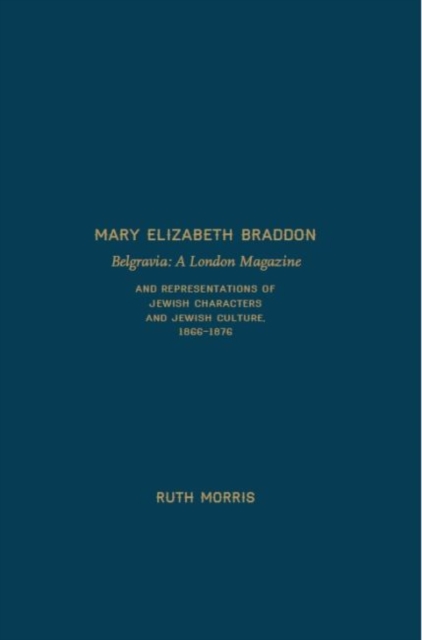
Belgravia: A London Magazine : And Representations of Jewish Characters and Jewish Culture, 1866-1880 Hardback
by Ruth Morris
Hardback
Description
This scholarly monograph investigates the representation of Jewish people, characters, places and customs within the periodical Belgravia: A London Magazine inclusive of the years 1866-1876.
The magazine, edited for a period by Mary Elizabeth Braddon, contains a range of articles on many different subjects including history, politics, literature, tourism etc, and the Jewish presence is clear within a diverse field of disciplines.
The study considers how this presence changes across the time period and how these changes can relate to broader societal and political movements that were occurring.
The book also engages with how the magazine incorporates ideas about specific issues facing Anglo-Jewry such as conversion and Zionism. This work very much follows on from the previous research about Braddon and the Jewish Question.
It provides a discursive analysis of the Jewish presence in a similar way to Mary Elizabeth Braddon and the Jewish Question: A Victorian English Novelist and the Worlds of Anglo-Jewry, Zionism and Judaism, 1859 - 1913 but draws on the references from Mary Elizabeth Braddon's Belgravia, A London Magazine, and the World of Anglo-Jewry, Jews and Judaism, 1866 - 1899.
There is no other research into the Jewish presence in Belgravia but the magazine is attracting more interest with other studies looking into this periodical.
There has been some research into the role of specifically Jewish periodicals in the nineteenth century but few into how non-Jewish magazines depicted Jewish people.
The work is original but does fit well into existing fields of contemporary research.
Information
-
Available to Order - This title is available to order, with delivery expected within 2 weeks
- Format:Hardback
- Pages:324 pages
- Publisher:Academica Press
- Publication Date:30/10/2014
- Category:
- ISBN:9781936320929
Information
-
Available to Order - This title is available to order, with delivery expected within 2 weeks
- Format:Hardback
- Pages:324 pages
- Publisher:Academica Press
- Publication Date:30/10/2014
- Category:
- ISBN:9781936320929






